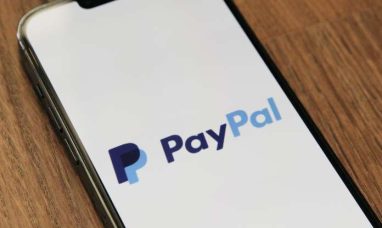Google (NASDAQ:GOOG)
Google (NASDAQ:GOOG) is under intense pressure from rivals and investors to deliver on its artificial intelligence (AI) promises. Google’s search engine has undergone a dramatic overhaul as a result of the popularity of ChatGPT, which prompted the company to launch its own artificial intelligence–powered chat tool, Bard. Although Bard has not yet been released to the public, its presentation has been lackluster, and the new technology has the potential to upend Google’s advertising industry, putting pressure on profit margins in the near future. The future uncertainties make this stock a poor investment. Nexus Research’s current recommendation is to hold for Google stock.
Improving Google’s search engine using AI is crucial for maintaining user interest. Still, the company must balance this with several worries in light of the industry’s fast pace of change.
There is some doubt about Google’s ability to lead the way in artificial intelligence advancement.
Google has been at the forefront of AI research and development for six years. The company still needs to secure first-mover advantages in several key areas of search-related AI breakthroughs. One of the most significant challenges to Google’s search supremacy is ChatGPT’s ascent, mainly as Microsoft integrates the technology into the Bing search engine.
Yet, the search giant is also behind in other areas of innovation. Google’s image-based search tool, Google Lens, has been widely adopted and often touted as evidence of Google’s artificial intelligence (AI) progress. Google Lens’ Multitask Unified Model (MuM) AI technology enables multimodal search, which CEO Sundar Pichai regularly touts, allowing users to search using both an image and words to more quickly discover what they’re searching for. Pinterest has had this capability since 2017, but Google provided its version in April 2022. Google’s e-commerce goals are undermined by AI developments like Google Lens. Still, other internet titans, such as Amazon and Meta, also provide image-based search features.
In light of the current demands from rivals, Google CEO Sundar Pichai recently reminded staff that Google was not the first search engine either. It still needed to become the dominant search engine in the world. While this is valid, the tech business has been more competitive over the last two decades. Google has yet to provide a competitive advantage, even when it arrives late to the party. Most recently, we saw this with the disappointing debut of Google Bard, whose demo included an inaccuracy.
Google’s Ads Are Under Fire
Google’s sluggish pace of AI advancement is worrying enough. Still, the ever-changing character of search activity also necessitates that Google adapts its advertising strategies. Google Search & other’ and Google Network are two essential types of advertising that might be influenced by changes in user search behavior.
Advertising income earned by Google from users of Google’s many digital sites, most notably the Search Engine Results Page, is referred to as “Google Search & other” (SERP). Google makes money when users interact with the paid links on search engine results pages (SERPs). In 2022, “Google Search & other” contributed almost 57% of total earnings.
Third-party publishers (website owners) sell ad space via Google Network partners (AdSense and AdMob). Google receives a share of the income from each ad impression served. For this model to function, users must visit “Google Network” sites, also known as “Google Network partners,” where advertisements will be shown. In 2022, the division was responsible for around 12% of total sales revenue.
We learned more about how Google intends to build Bard answers to keep people engaged with websites displayed in Google search results from CEO Sundar Pichai’s blog post introducing Bard.
There is a “Learn more” section with links to further resources underneath Bard’s response. The demo did not make the suggested articles seem like advertisements. Google emphasizes how well websites answer users’ search inquiries. Although this strategy makes sense from a user-friendliness standpoint, it throws a wrench into Google’s search advertisements business.
The space taken up by Bard’s answer to user inquiries is significant, pushing website links further down the SERP. Consumers are less likely to browse to locate website links if Bard’s response is adequate, so the value of ad bidding to rank higher is diminished. This has the potential to significantly impact Google’s search-related ad income.
If Google wants to keep making money from ads, it may need to rethink its ad strategies around Bard. One just looks to YouTube’s Shorts to see how slow the digital giant can be to capitalize on new media forms. As competition from TikTok became a concern, the short-form video content function was released in September 2020. Despite YouTube Shorts’ popularity (it receives 50 million views per day), Google still needs to level the playing field between the revenue of short-form and long-form content on the platform.
Moreover, there is still the danger of dissatisfying advertisers with how ad solutions are created around Bard, as they may still consider website discoverability and monetization potential hampered by Bard, despite Google’s efforts to alter its ad solutions in light of changing search behavior.
This would be a blow to Google’s advertising business when the company is already experiencing stiff competition from the likes of Amazon and other e-commerce sites and social networking sites like Meta and Pinterest. Hence, as Google experiments with ways to profitably monetize Bard, marketers may choose from various other choices.
Conversational inquiries using Bard minimize the need for users to visit websites to obtain answers, lowering ad impression on web pages and thus advertising income through the ‘Google Network.’
To retain Google Network ad income, Pichai suggests that Google would push users to visit publishers’ websites for more thorough responses, citing how replies from Bard will help consumers see the larger picture.
But, depending on rivals’ actions, rising competition levels may compel Google to provide more nuanced Bard responses. Google would need to improve its service if its competitors provided more comprehensive information without directing consumers to other websites.
Despite Google’s best efforts, Bard’s chat feature may tempt users to keep asking virtual assistant questions rather than visiting the websites of content creators themselves. Therefore, Google’s Bard may be tempted to provide more in-depth answers to preserve the service’s ease and usefulness, even if doing so reduces Google Network income.
Unfortunately, not all websites linked to in the “Read more” section will be part of the Google Network, so users should proceed with caution. An open question is to what extent and in what ways Google will prioritize Google Network partners/highest-bidding advertisers in a Bard-driven search engine to maximize ad income. Yet, the trustworthiness of Bard’s replies and recommendations would be diminished by taking this route. Google must carefully balance improving the reliability and value of Their answers with increasing ad income.
When it comes to making money off ChatGPT, OpenAI would instead not rely on advertising and instead seeks to charge users a monthly membership fee. OpenAI launched ChatGPT Plus in February 2023 for $20 per month. The user experience of ChatGPT may improve as a result, particularly if Google continues to prioritize maximizing advertising income. ChatGPT’s responses and recommendations might seem more helpful to users in this case. Still, Google would have to work hard to combat the impression that it favors advertisers that pay the most.
Further research and testing are required for both ChatGPT and Bard to provide reliable results. Given that the eventual objective is to provide trustworthy information, a fee-based business model (like OpenAI) may make more sense than an ad-based one in the long run.
Data Processing Fees at Google Bard Are Expensive
Google keeps its operational revenue for its many advertising businesses. Instead, the ‘Google Services’ category comprises ‘Google Search & other,’ ‘YouTube advertisements,’ ‘Google Network,’ and ‘Google Other,’ which is reported in the company’s financials. The operating margin for ‘Google Services in 2022 was 34%. It’s important to remember that both the “Google Cloud” and “Other Bets” divisions are losing money. In 2022, Google’s net margin was 21.20 percent.
AI-powered searches are predicted to cost Google 10 times as much as regular searches. One analyst raised concern about the “effect on CapEx of the increasing compute intensity of these AI technologies, possibly hurting margins over the next couple of years” during the most recent results call. Financial VP Ruth Porat remarked:
It requires more processing power but allows us to provide our users, producers, and marketers with many new options.
At the data center, on the servers, and in the supply chain, we are all working tirelessly to reduce the cost of computation. Thus, we’re focusing squarely on returns when we make new investments…
Our primary goal is to make long-lasting reductions in operating costs… They are more labor-intensive to put into action. They are now underway, and as we go forward, they will compound and give increasing benefits, which is why I said you’d feel their effects more strongly in 2024 than in 2023.
Long-term investments in productivity could lead to better cost management. Rising levels of competition might dampen ROI potential and constrain top-line growth. During the most recent earnings conference, Google’s executives gushed over the success of Performance Max, an AI-powered advertising and marketing solution. Upgraded from smart shopping campaigns, Performance Max was introduced in November 2021 to boost Google shopping.
Despite AI’s contribution to progress, Google Advertising income climbed at a more modest 7.15 percent that year, with management mainly attributing the slowing growth to macro factors. In comparison, Amazon’s advertising revenue climbed by 21.11 percent over the same time frame. The reason is that Google’s margins may only expand if the company makes long-lasting cost structure improvements since rising levels of competition in AI-driven services may dampen revenue growth prospects.
Yet, Google’s net margin of 21.20% is still much greater than the industry average of 3.38%. Nonetheless, Google’s net margin has generally declined for over a decade, with the stay-at-home bump during the epidemic being the exception.
Ads have been a massive moneymaker for Google for years, so much so that it has been able to subsidize its other, less successful businesses, most notably Google Cloud. Google’s net margin might be in jeopardy if its advertising segment experiences margin compression in the future due to the escalating AI competition.
Compared to the industry median of 18.70x, Google stock is currently trading at a Forward P/E of 18.34x. Because of the company’s bleak profitability prospects, the market is correct in not assigning a premium price to Google shares.
Regular Patterns of Looking
Some proponents of Google stock argue that the company’s dominance in the market is because its search engine is so deeply embedded in people’s daily lives that switching to a different provider would be difficult. As of February 2023, Google was used by 93.37% of all internet users globally when doing a search. Because of its widespread popularity and widespread use, the tech giant enjoys a near monopoly on the search engine industry. Tobias Zwingmann, an AI consultant, said in December 2022 that “the way it works presently is people use ChatGPT and then go to Google to check the findings,” a fact that is a testimony to Google’s brand strength despite the popularity of ChatGPT.
Therefore, while it may be difficult, changing search behavior is possible. Some generations may have Google engrained in their routines. Still, newer generations may be less wedded to Google, particularly with the emergence of new platforms like TikTok, where users often go to learn more about certain subjects (e.g., get financial advice).
The search giant’s capacity to maintain consumers’ habitual search behavior may need to be improved by regulatory scrutiny aimed at dismantling the Apple-Google relationship, wherein ‘Google’ is configured as the default search engine on Apple devices.
Should You Invest in Google Stock?
Google’s primary advertising business might be threatened by the sudden release of Google Bard. If Bard’s reaction is adequate, the value of ad bidding to reach the top of search results diminishes since fewer people will have to scroll down to locate website links. The implications for Google’s ability to earn money from ads linked to searches are significant.
Conversational searches using Bard minimize the need for users to visit websites to obtain answers, lowering ad impressions on web pages and thus ad income through the ‘Google Network. Users may want to keep conversing with Bard to obtain the answers, even while Google suggests visiting websites for more reading.
Google must carefully balance improving the reliability and value of Their answers with increasing ad income. OpenAI’s fee-based business model, on the other hand, may increase consumers’ view of ChatGPT Plus as providing impartial and valuable responses; but, to gain market share, ChatGPT Plus will need to demonstrate its more excellent dependability compared to Google.
Considering the dismal projections for future profits, the investing community is correct to not place a high value on Google shares. There are too many potential downsides and unknowns associated with AI to make this stock a good investment. Google stock is rated “hold” by Nexus Research.
Featured Image: Pexels @ Caio









